As shown in figure, if we apply a horizontal force F on the block, find the maximum force F (in N) that can be applied so that block does not slide up. (Givenθ=45∘,g=10m/sec2,m=15kg,μ=12) 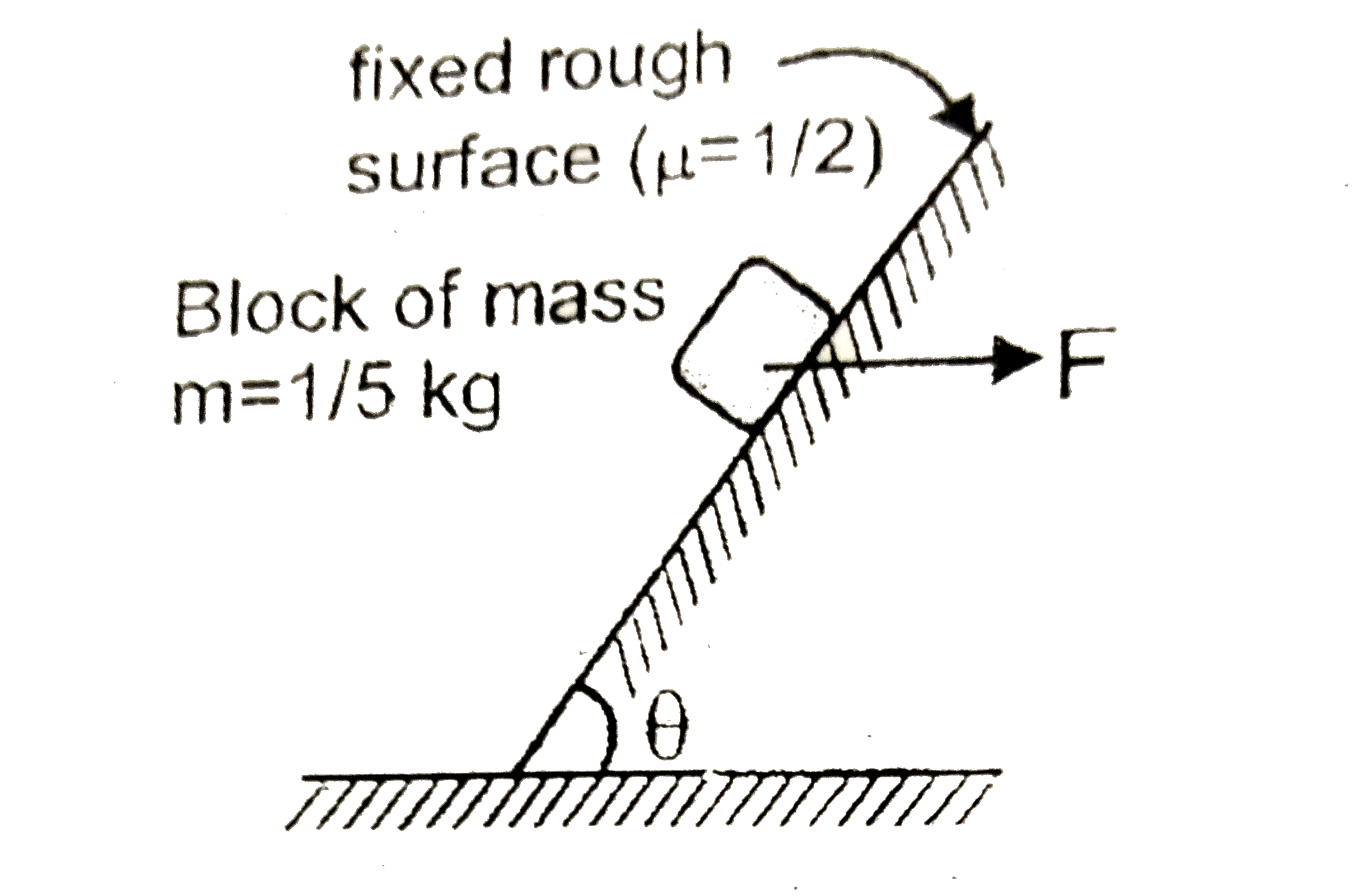
The correct Answer is:6
Fcosθ≥μN+mgsinθ
But N=Fsinθ+mgcosθ
Fcosθ≥μ(Fsinθ+mgcosθ)+mgsinθ
F≥μF+μmg+mg
F2≥32mg
F≥3mg,F≥3×15×10
F≥6N 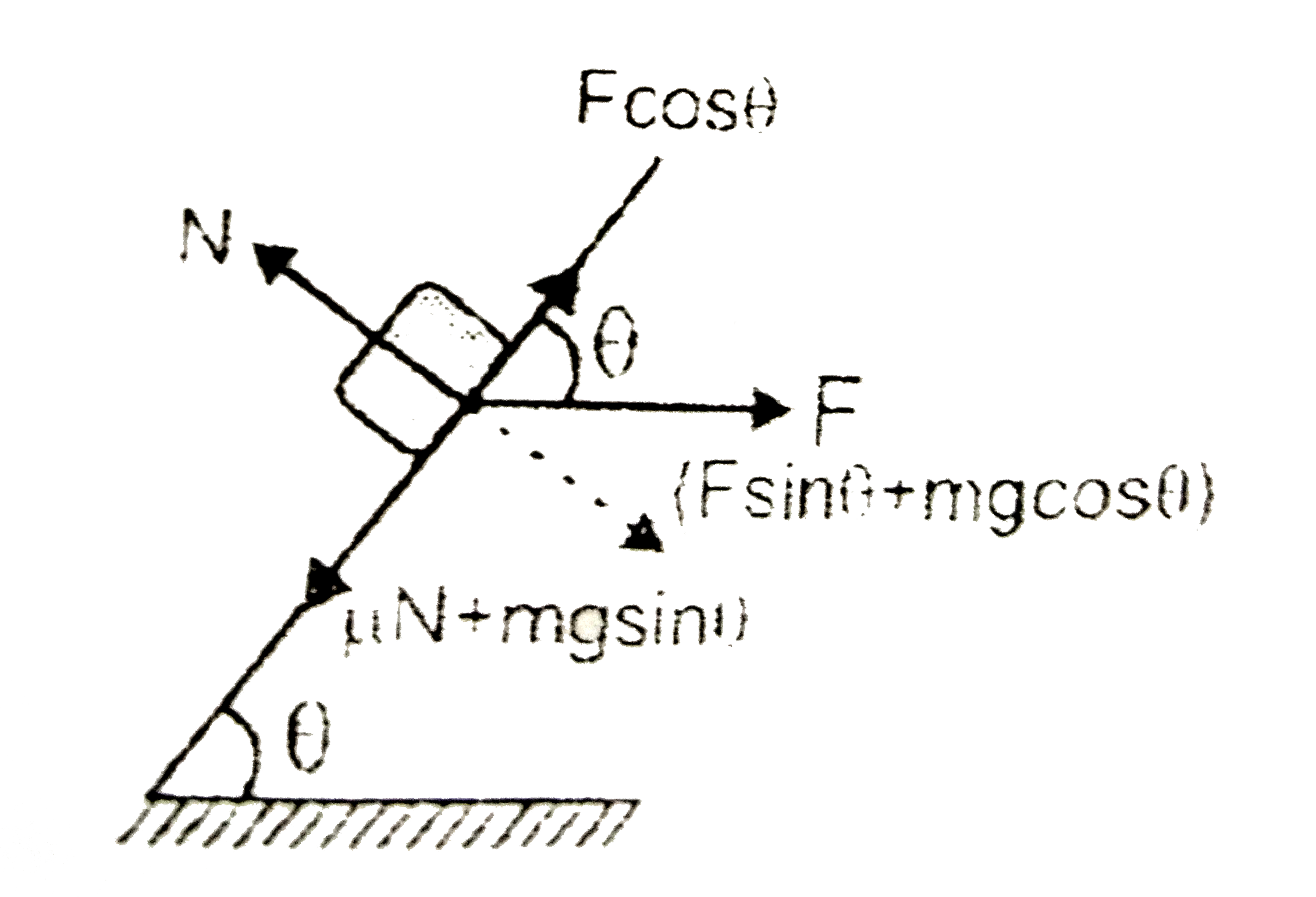
Similar Questions
In the figure shown, the minimum force F to be applied perpendicular to the incline so that the block does not slide is
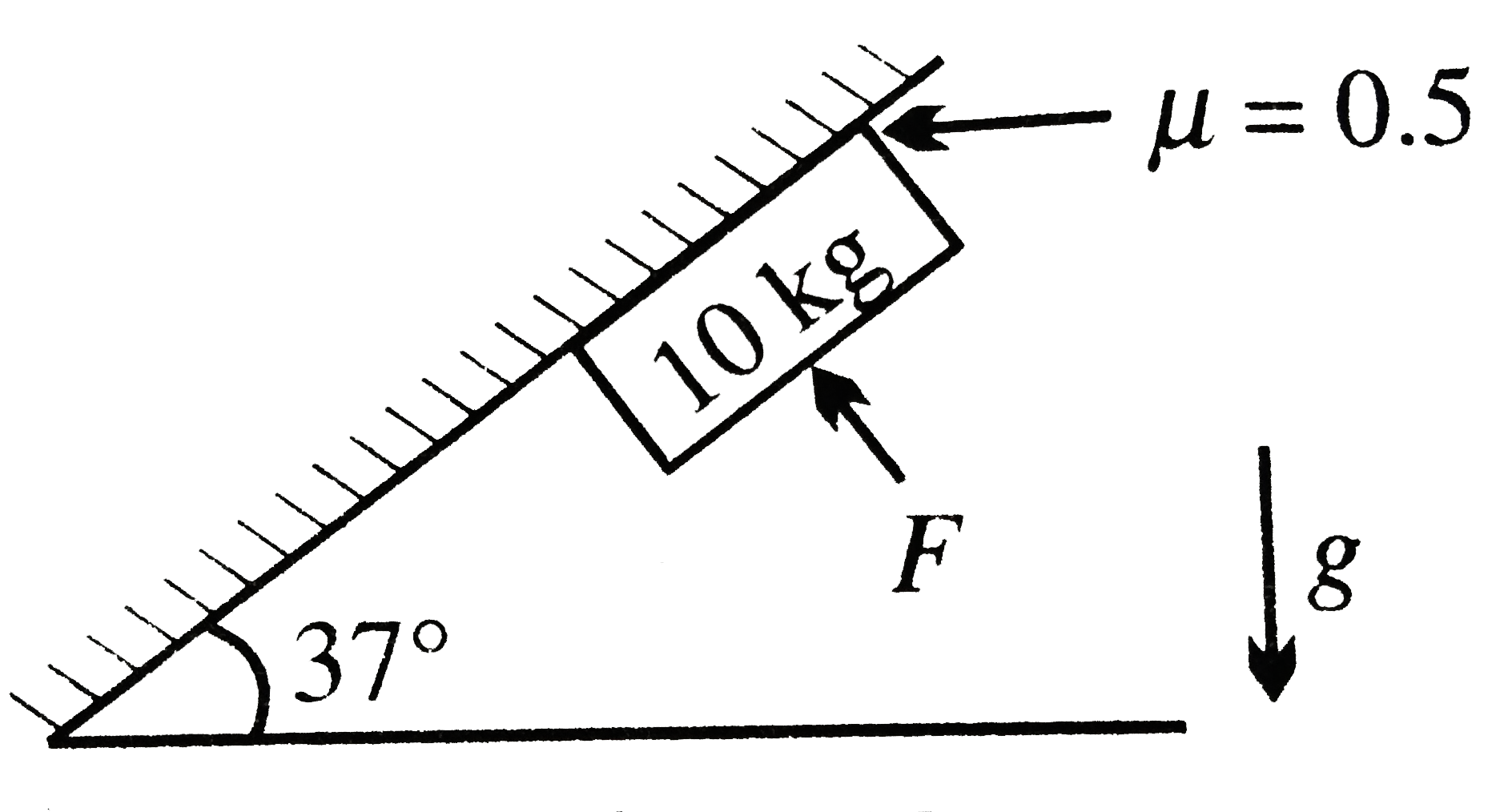
View SolutionTwo block "A&B" of mass MA=1kg&MB=3kg are kept on a smooth table as shown in the figure.The coefficient of friction between "A&B" is "0.2" .The maximum force "F" that can be applied on "B" horizontally,so that the block "A" do not slide over the block "B" is Take g=10ms2andk=400Nm)
View Solution
Knowledge Check
In the figure shown, the minimum force F to be applied perpendicular to the incline so that the block does not slide is
 A200NB40NC120NDnone
A200NB40NC120NDnoneIn the arrangement shown in figure mA=mB=2kg. String is massless and pulley is frictionless. Block B is resting on a smooth horizontal surface, while friction coefficient between blocks A and B is μ=0.5. What maximum horizontal force F can be applied so that block A does not slip over the block B? (g=10m/s2)
 A25 NB40 NC30 ND20 N
A25 NB40 NC30 ND20 NIn the arrangement shown in figure, m_A = m_B = 2kg. String is massless and pulley is frictionless. Block B is resting on a smooth horizontal surface, while friction coefficient beteen block A and B is μ=0.5 . the Maximum horizontal force F that can be applied so that block A does not slip over block B is.
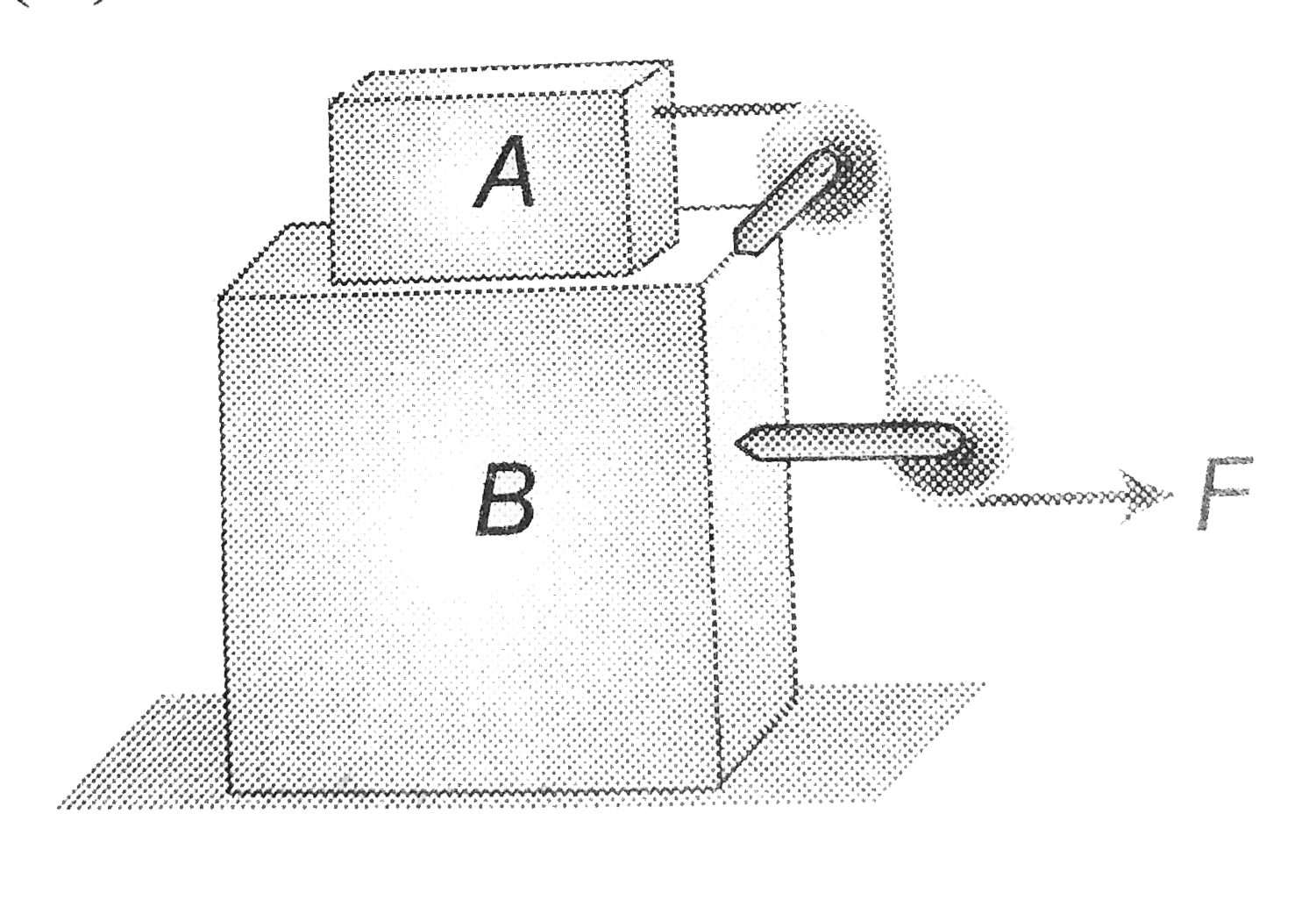 A25NB40NC30ND20N
A25NB40NC30ND20N
Consider the situation shown in the figure . The coefficient of friction between the blocks is μ. Find the minimum and the maximum force F that can be applied so that two blocks move together.
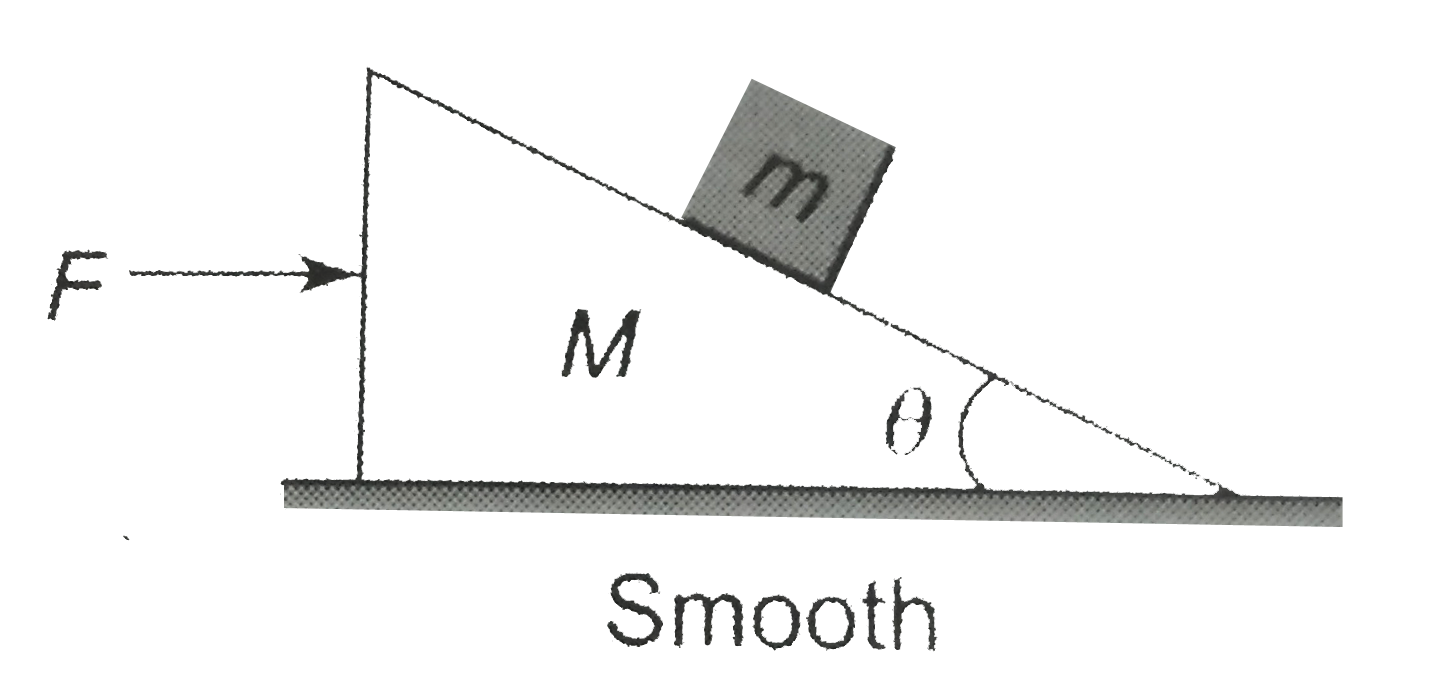
View SolutionA block of mass m is placed on another block of mass M lying on a smooth horizontal surface as shown in the figure. The co-efficient of friction between the blocks is μ. Find the maximum horizontal force F (in Newton) that can be applied to the block M so that the blocks together with same acceleration? (M=3kg,m=2kg,μ=0.1,g=10m/s2)
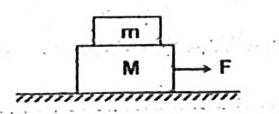
View SolutionTwo blocks A and B of masses mA=1kgandmB=3kg are kept on the table as shown in figure. The coefficient of friction between A and B is 0.2 and between B and the surface of the table is also 0.2. The maximum force F that can be applied on B horizontally, so that the block A does not slide over the block B is ________ (in N): [Take g=10m/s2]
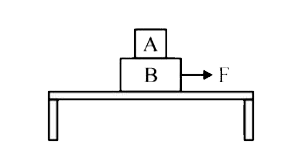
View SolutionInitially, both the blocks are at rest on horizontal surface as shown in the figure. Find the minimum value of force F in (N) so that sliding starts between the blocks (g=10ms−2)
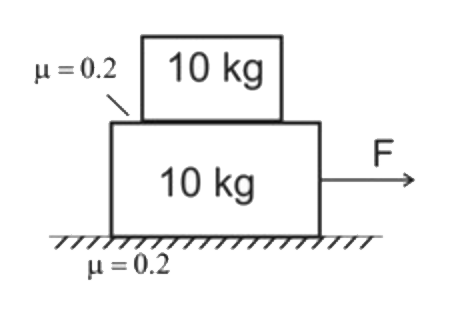
View SolutionA block of mass 5kg is held against a wall with a force of 100N. as shown om figure. It is moved horizontally slowly by applying a force parallel to the wall. Then the fricational force on the block due to wall is 25x newton. Find x. (Given μ=0.5 and g=10m/sec2)
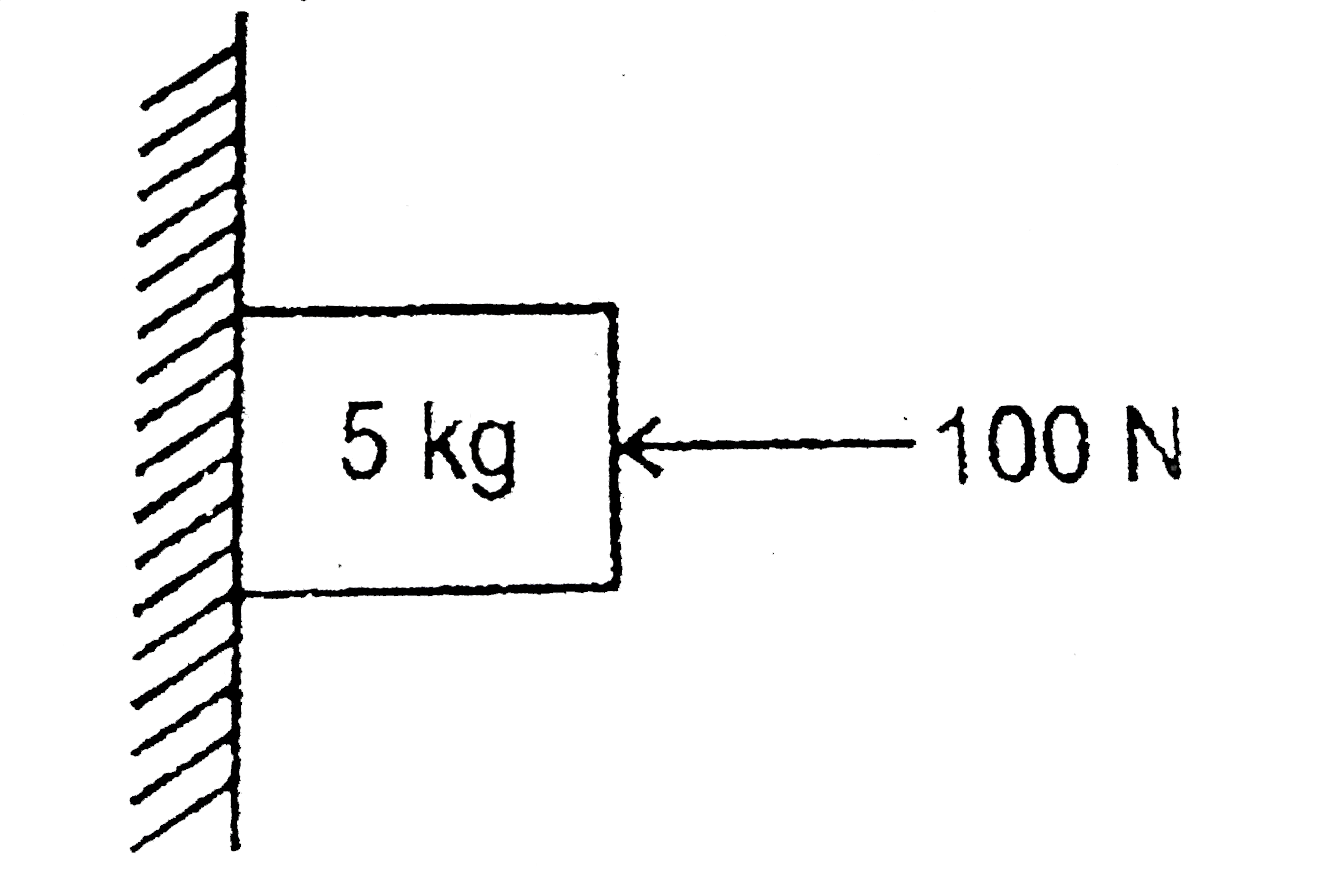
View Solution